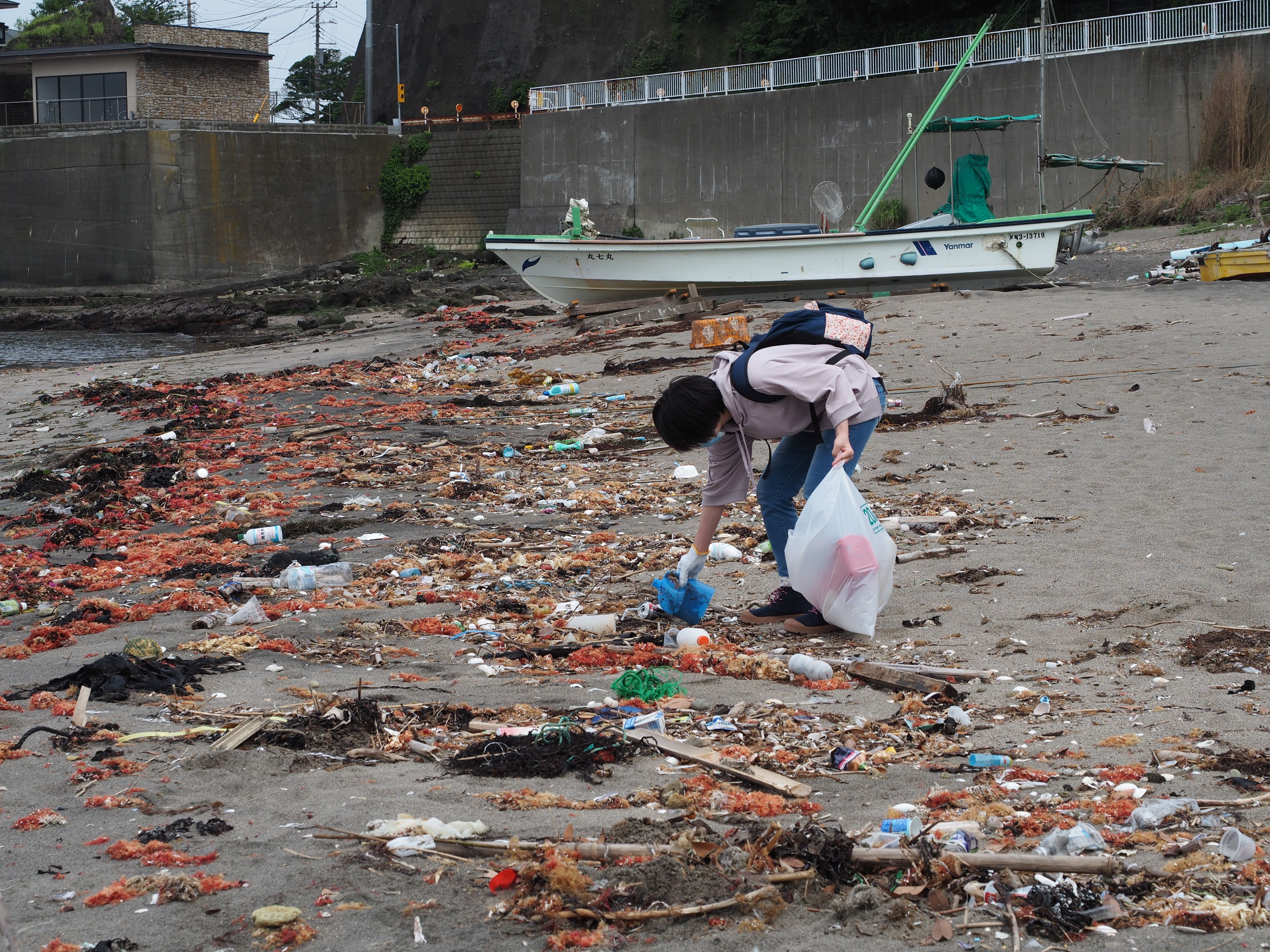<"buøy" is an indicator of plastic waste floating in the ocean>

The name "buøy" comes from a buoy, a sign that floats in the ocean.
When I go for beach cleanups in Japan, I sometimes find surprising garbage.
It could print the name of a place far away , or of a symbolic name of the old time. It may be the name of a different country, or a product name sold more than 20 years ago.
I feel as if I've been transported to an old time or a different country.
But in reality, it is garbage that has traveled a long distance with the sea currents. Once the garbage is washed up on the beach, if it is not collected there, it will be blown by the wind to the next beach, and next beach, and next. This is how it travels a long distance.
When I see this kind of garbage, I realize that plastic is a material that does not really return to nature as it is.
The floating plastic garbage will drift time and distance without disappearing, if living creatures do not eat it by mistake.
In order to solve this problem, we need to change our disposal systems, and our way of life.
We have an idea like this.
The materials for wood products come from the forest, ceramics come from the soil. And "buøy" comes from the ocean.
If we don't plant trees, the wood will eventually disappear. And if we don't increase the amount of plastic waste in the ocean, it will eventually run out as long as we consume it for making "buøy".
In order for this to happen, we must work to reduce the amount of marine debris in the ocean and encourage society to do the same.
)
)
)
